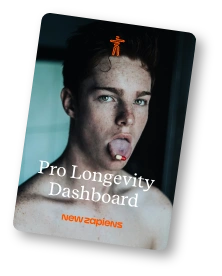The New Male Status Symbol: High Testosterone, Naturally Earned.

We live in the smartest generation of all time. With access to more health tools, data, knowledge, and AI guidance than ever before. We’ve got wearables, full-body scans, precision nutrition, algorithmic coaching, and hormonal insights available 24/7.
And yet—when it comes to testosterone, arguably the most central hormone in a man’s physical, emotional, and sexual health—we’re seeing the opposite of progress: we’re witnessing a steep and ongoing generational decline.
This isn’t theory or marketing—it’s cold data.
Over the last two to three decades, studies have shown a clear drop of over 20%–25% in average testosterone levels, even among healthy men.
One large-scale analysis of U.S. health data between 1999 and 2016 found that total testosterone in young men dropped from over 600 ng/dL to just 451 ng/dL on average—a decline of roughly 25% in under 20 years. And this trend held true even in men with normal BMI and good metabolic health.
Another long-term population study found that men in the early 2000s had testosterone levels more than 20% lower than men of the same age just two decades earlier—despite similar health metrics. A third clinical study confirmed not only a continued drop in bioavailable testosterone among younger men—even when accounting for body weight or chronic illness—but also showed that men with low testosterone were significantly more likely to die earlier than those with healthy levels.
So if the numbers are falling by the decade—even in the “healthy” population—the big question is: what’s driving this? The answer isn’t one thing. It’s many. A slow-burning combination of sleep deprivation, chronic stress, poor diet, low physical activity, exposure to endocrine disruptors, artificial light, and ultra-processed food is slowly shifting the hormonal baseline of the modern male.
And testosterone isn’t just “the muscle hormone.” It’s tied directly to mental health, motivation, fertility, sexual performance, cardiovascular risk, fat metabolism, recovery, mood regulation, and even long-term all-cause mortality. In other words: this isn’t an aesthetic issue—it’s a longevity issue.
When testosterone is low, men don’t just feel worse—they function worse. And they age faster. So the problem today is no longer why testosterone matters. Most men—especially those reading this—already know. They’ve seen the studies. They follow the doctors. They’ve probably already Googled “TRT side effects” or had that one conversation with their doctor who said, “Well, we could try a cycle.”
The problem today is the how.
How to increase testosterone naturally. How to build routines that work. How to implement what we already know—long-term, sustainably, and in a way that fits real life. Because health today is no longer about information.
It’s about integration.
The Cultural Shift: From Quick Fix to Flexing Function
We’re in the middle of a powerful cultural redefinition. For decades, effort was glorified. Hustle. Grind. Burnout as a badge of honor. But now, the new flex isn’t how hard you work. It’s how intelligently you recover. How sharp you think. How well your body runs—mentally, emotionally, hormonally and naturally. Across all layers of society, one truth is clear:
A naturally high-functioning body is the new apex status symbol.
And testosterone? It’s the operating system. Not just for muscle. But for mood. Libido. Focus. Confidence. Recovery. Fat metabolism. Even how well you lead—your family, your business, your team.
This is why more and more men are paying attention.
But they’re also realizing something deeper: knowing isn’t enough.
Medicine 3.0 Demands a Lifestyle 3.0
Classical medicine still works like this: Feel bad → see a doctor → get a prescription → hope for the best.
But most modern men are way ahead of that cycle now. They don’t come to doctors for answers—they come with their own research. With labs. With AI-generated health reports. With data from their Oura Ring. What they’re really looking for is implementation. They already know that testosterone declines 1–2% per year starting around age 30. They know low T is linked to fatigue, brain fog, libido loss, belly fat, poor sleep, emotional dullness.
They also know that just taking hormones comes with risks, side effects, dependency.
What they want now is a roadmap.
How do I fix this—naturally, consistently, long-term?
The Real Problem: Not Hormones. Habits.
At Amaru Labs, we’ve worked with hundreds of men across the spectrum—from founders to creatives to top-tier athletes. They come in exhausted, low-energy, low-desire, frustrated with their bodies. They want the protocol, the solution, the plan. And yes, sometimes it’s 100% a hormone issue.
But more often? It’s a lifestyle design problem. They’re sleeping five hours a night. Training once or twice a week—often after 6pm. Skipping meals or eating ultra-processed food. High stress, low sunlight, minimal intimacy. Supplements taken randomly, without testing. And most haven’t even looked at their full hormonal panel—vitamin D, K2, magnesium, cortisol, SHBG, insulin, estradiol.
The body isn’t malfunctioning. It’s reacting.
Reacting perfectly to the environment it’s given.
Habits Are the Real Hormone Therapy
The biggest misconception around testosterone? That it’s something to “take.” In reality, testosterone is something you train—through rhythm, precision, and environment. And the best part? Change doesn’t take years.
In 30–60 days, with the right inputs, a man’s entire hormonal reality can shift.
We see this every week:
- Better libido
- Deeper sleep
- Stronger recovery
- Sharper mental clarity
- Greater confidence
- Healthier relationships
- Greater business performance
- More impact in leadership
Because when your hormones are aligned, your entire life aligns. That’s why people pay—not just for the knowledge, but for the integration. Not just for a solution—but for the system to live it.
Brands Must Do More Than Sell Solutions
This is where modern health brands, platforms, and products must level up. The new role of a brand is not to say: Here’s what to do. It’s to say: Here’s how to live it. And here’s how to make it stick.
That’s why we’re seeing a rise in community-driven brands—platforms and ecosystems that combine education, accountability, routine, coaching, and structure. Because without structure, knowledge dies. And especially in hormonal health, the real transformation happens through rhythm.
Final Thought: Hormones Don’t Just Change Your Body—They Change Your World
Testosterone isn’t just about feeling better. It’s about functioning better—in your work, your relationship, your body, your mind, and the way you show up in the world.
Whether it’s your ability to lead with clarity, to connect deeply with a partner, to recover fully from stress, or to feel grounded in your own presence—hormonal alignment impacts everything. Testosterone isn’t some niche biohacking number. It’s a core signal for male vitality and, ultimately, longevity.
This current decline is not just a lab value trend—it reflects a deep biological mismatch between how we’re living and what our bodies need to thrive. So the question isn’t just what’s happening—it’s what you’re going to do about it.
Where to Start?
The good news? You can begin today. And in many cases, results come faster than you’d expect. Not with pills. Not with shortcuts. But with precision in the fundamentals:
- Sleep: 8 hours. Cold (~16–18 °C). Dark. Quiet. Same bedtime, every night. Non-negotiable #1 recovery tool.
- Training: Lift heavy. Sweat daily. Prioritize large muscle groups. Morning > evening (cortisol matters).
- Nutrition: Whole, nutrient-dense and unprocessed foods. High-quality animal proteins and fats. Cut sugar completely if you can.
- Testing: Know your numbers. Track testosterone, vitamin D, magnesium, SHBG, estradiol, and cortisol. Don’t guess—optimize.
This is where real transformation happens—not in the complexity, but in the consistency. And no—you don’t need to spend thousands. At Amaru Labs, we give much of this content away for free. Because this isn’t about hacks. It’s about giving men the tools to lead themselves—with clarity, rhythm, and the right routines.
We don’t need more information. We need systems we can live by. Daily. Naturally. For life.
References
Author: Amon Lang
Helping men turn deep health knowledge into long-term lifestyle success 🧬 Founder & CMO @amarulabs @wewald.co @amonlangmedia EX @anti.berlin




